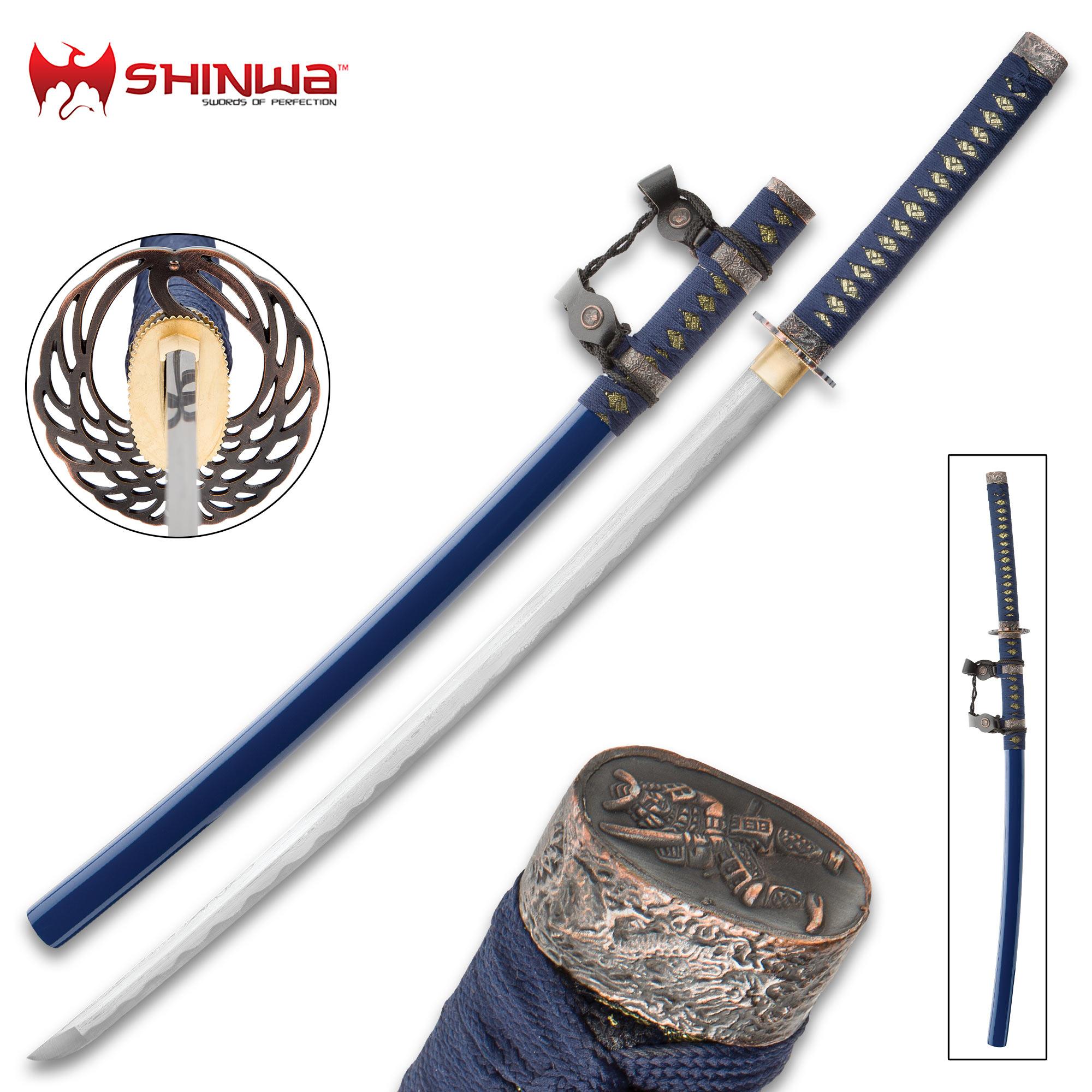What is a Tachi?

By Desiree Weeks
Japan has a rich tradition of crafting beautiful swords that spans centuries and many collectors covet the swords worn by the samurai class.
One type of sword worn by the samurai class of feudal Japan is the tachi. The tachi is believed to have been developed during the Koto period which spanned from 900 to 1569. With its prominent curved blade, the tachi could make devastating blows on the battlefield and served primarily as a cavalry sword. While it was certainly a formidable sword, it also became known as quite a beautiful weapon.
Regular samurai were known to wear a style of tachi with a hilt wrapped in leather or ray skin, which is still common practice today, while court nobles wore tachi decorated with precisely carved metal and jewels for ceremonial purposes.
 |
 |
 |
 |
 |
 |
 |
 |
 |
 |
Tachi Vs. Katana
While many people may immediately think of katana when they think Japanese sword, the tachi actually predates the katana. The katana didn’t come around until the Kamakura period, spanning 1185 to 1333. However, even after the introduction of the katana, high-ranking samurai still wore tachi swords.
As its predecessor, the tachi was the inspiration behind some of the katana’s construction, but they still have some distinct differences. Traditionally, tachis have a longer blade than a katana with a typical blade being anywhere from 27 9/16” to 31 1/2". The blades also set the two swords apart with the tachi having a more prominent curve and a smaller point area for penetration.
The style in which the swords are worn also differs. A tachi is worn using two hangers, which allow the sword to be worn horizontal with the cutting edge down. A katana is traditionally worn cutting side up. This puts the traditional signature, also known as the “mei”, on opposite locations as it should be facing outward when the sword is worn on the wielder’s left waist.
If you’re a Japanese sword collector or just someone looking to add an ornate, historic piece of weaponry to their lives, here are some great tachi options from BudK!
Sokojikara Natsukashii Handmade Tachi
If you’re looking for a sword that truly embodies Japanese history, then the Sokojikara Natsukashii Handmade Tachi is just what you need. A work of art, this traditional tachi has an expertly forged 28 3/8” 1060 high carbon steel blade. The blade is created through clay tempering, which creates an impact absorbing blade spine and body while also producing a natural hamon line. The detailing is immaculate with delicate floral patterns found throughout the cast menuki, kashira, fuchi, and tsuba. Just as the tachis of the past, the handle is wrapped in traditional braided ito. While the tachi itself is impressive, the hand-lacquered scabbard, or saya, is equally stunning. It features cast medallions, insignia accents, and traditional leather cavalry hanging hardware.
Shinwa Genesis Handmade Tachi
If you’re looking for a bit of variety, or to build a beautiful set, you’ll want to check out the three color options available for the Shinwa Genesis Handmade Tachi. Available in white, blue, green, each of these swords is perfectly crafted with vivid coloring. The first notable element is the circular cast metal tsuba in a classic crane wing design just beneath the gold threaded cloth and cord wrapped handle. Atop the handle is an ornate pommel, showcasing a Samurai design. While the design elements are stunning, this classic tachi of course has a menacing blade. It has a hand-forged Damascus steel blade measuring 27 3/4" that easily slides into its lacquered wooden scabbard. Easily carry this sword into battle with the genuine leather and black cord cavalry hanger.
Shinwa Blood Moon Tachi Sword
Another historically accurate find is the Shinwa Blood Moon Tachi. The hand-forged 28 1/2" blade is made of 1045 high carbon steel, extending from a brass habaki and pewter-colored metal alloy floral patterned tsuba. Carrying on the floral pattern is the matching pewter colored pommel and sheath accents. With an eye-catching color scheme, this tachi has a white faux rayskin and cord wrapped handle that looks striking when sheathed in its blood red lacquered scabbard. The scabbard also has an intricately wrapped sword hanger of white and red cord.



